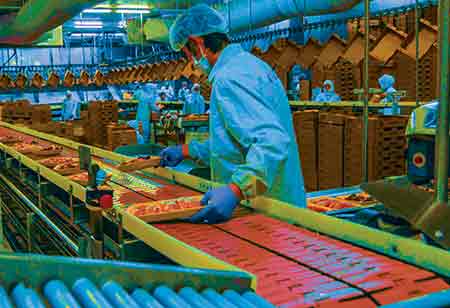Thank you for Subscribing to Food Business Review Weekly Brief
Significance of Tech-driven Food Delivery Apps

By
Food Business Review | Thursday, January 06, 2022
Stay ahead of the industry with exclusive feature stories on the top companies, expert insights and the latest news delivered straight to your inbox. Subscribe today.

With social isolation turning the new normal, customers respond positively to online food ordering systems and doorstep food delivery services.
Fremont, CA: The food business was the worst hit by the Covid19 crisis, which shook the world in 2020. Food businesses have experienced significant losses because sit-down restaurants are closed temporarily, and consumers are hesitant to eat out. Hence, most food enterprises, whether small-scale eateries, solo entrepreneurs, or high-end restaurants, have accepted a technology-integrated method to surviving in the face of tragedy.
Food delivery apps, digital menu cards, cloud kitchens, contactless payment alternatives, and other technology-driven digital solutions aid in reviving the food business. With social isolation seemly the new normal, customers respond positively to online food ordering systems and doorstep food delivery services.
Technology-driven Business Strategies and Their Profitability
Cloud Kitchen
Cloud kitchens, sometimes called dark kitchens, are virtual restaurants that do not have true dining areas. These are meal delivery-only businesses that depend solely on consumer orders placed online. Cloud kitchens utilize food aggregators or their food ordering and delivery application to take orders and deliver food. Businesses are progressively employing this business model to raise profit margins.
Managing different food brands on a small budget
The proprietor of a cloud kitchen advantage from the ability to run two or more food brands concurrently on the same infrastructure and resources. For instance, a virtual kitchen brand that particularises in Mexican cuisine would like to provide Italian cuisine as well.
Nevertheless, rather than introducing an Italian menu to a current company, the owner may do a new business that sells Italian food and operates out of the same kitchen. Customers love to test various food brands; thus, this strategy is sound.
Minimal Investment and Operational Cost
Virtual restaurant businesses don't require to invest a lot of money, as they avoid the costs of renting and maintaining huge spaces for dine-ins. Instead, they need a kitchen that delivers online orders and the bare minimum of employees to run it. Thus, owners can save money recruiting client-facing staff, resulting in cheaper operational costs than a traditional restaurant.
Food Delivery Apps
Online ordering and delivery services have grown a must-have feature in the current pandemic. While physical dine-in restaurants were a tough hit, restaurants that provided contactless food delivery services continued to generate sales even during the pandemic. During the epidemic's beginning, internet meal ordering applications saw increased demand. Furthermore, a year after the Covid19 outbreak, consumers usually chose off-premise dining options, demonstrating the social distancing trend.
Hybrid Infrastructure
The term "hybrid infrastructure" speaks about an all-in-one idea that meets the requirements of various groups of consumers at multiple times.






